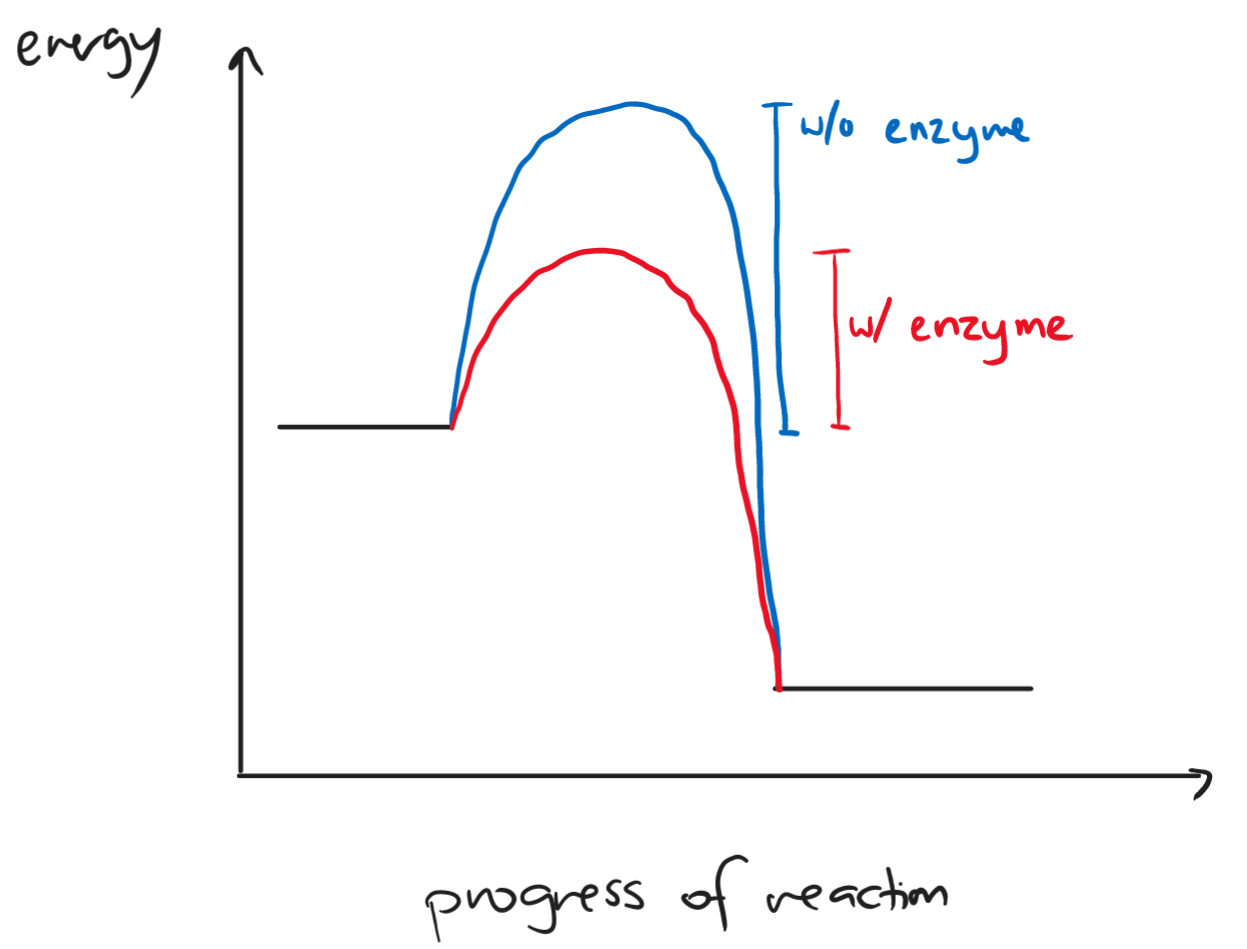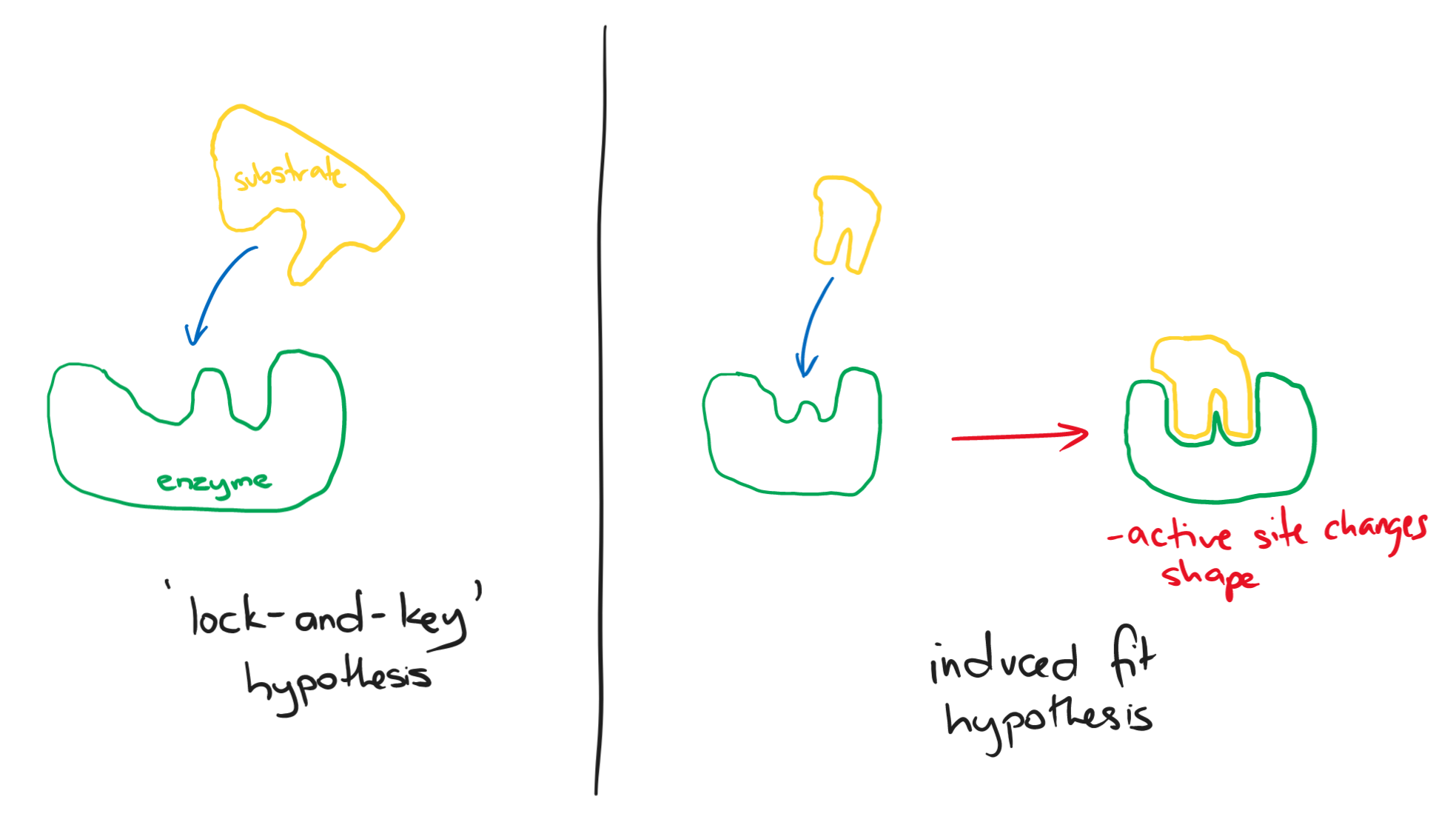CIE AS Biology 3.1: Enzymes
Enzymes are biological catalysts that speed up the rate of reaction but are not used up in a chemical reaction. They can be catabolic (break down) molecules or anabolic (build up) molecules.
Enzymes have a specific shape as they are globular proteins.
- their active site is specific to one type of substrate; complementary shape
- they can be the catalyst for only one reaction
There are two types of enzymes: intracellular and extracellular.
- intracellular enzymes: secreted and used inside cells; found in the cytoplasm of cells or attached to organelles (e.g ribosomes, lysosomes, mitochondria, nucleus)
- extracellular enzymes: secreted and used outside of cells; pancreas secretes certain enzymes to be used outside of the pancreas i.e digestive enzymes in the stomach
Enzymes are used to lower the activation energy required to start a reaction. Hence, they speed up the rate of reaction. They provide alternate energy pathways. The activation energy is reduced due to the reversible bonding between the active site and the substrate that allows them to interact more easily.
 Substrates can bind to an enzyme in two different ways:
Substrates can bind to an enzyme in two different ways:
 The induced fit hypothesis is more commonly acknowledged.
The induced fit hypothesis is more commonly acknowledged.
Immobilised Enzymes
Enzymes are usually free. Immobilised enzymes are enzymes that have been bound to an inert, stationary, and insoluble material. Alginate is commonly used.
- immobilised enzymes are commonly used by manufacturers in the making of lactose-free milk for lactose-intolerant people
- lactase is the enzyme responsible for breaking down lactose into glucose and galactose
- they keep manufacturing costs down as immobilised enzymes can be reused without losing them in the solution
- the final solution is not contaminated with enzyme-substrate complexes as they can be extracted